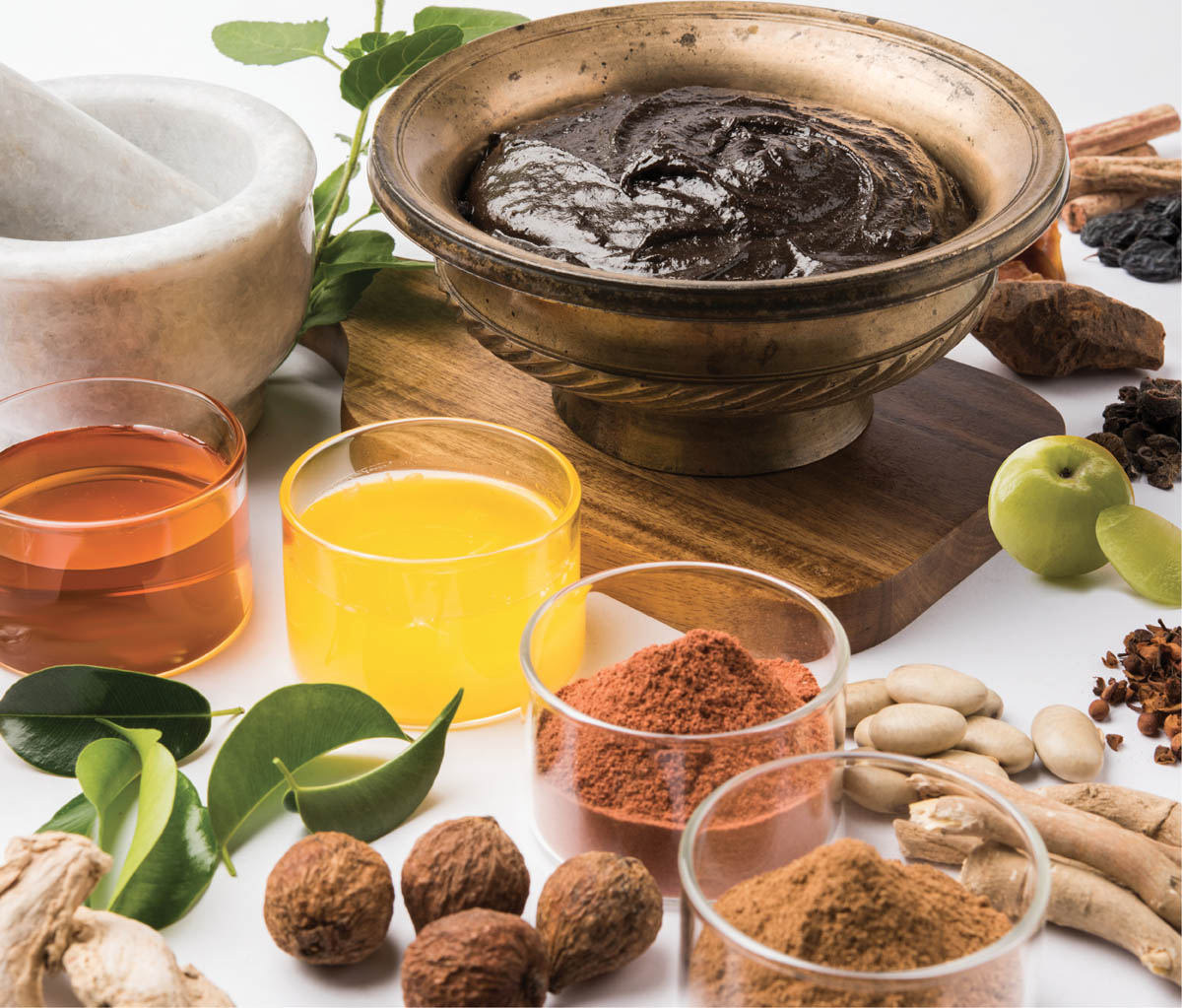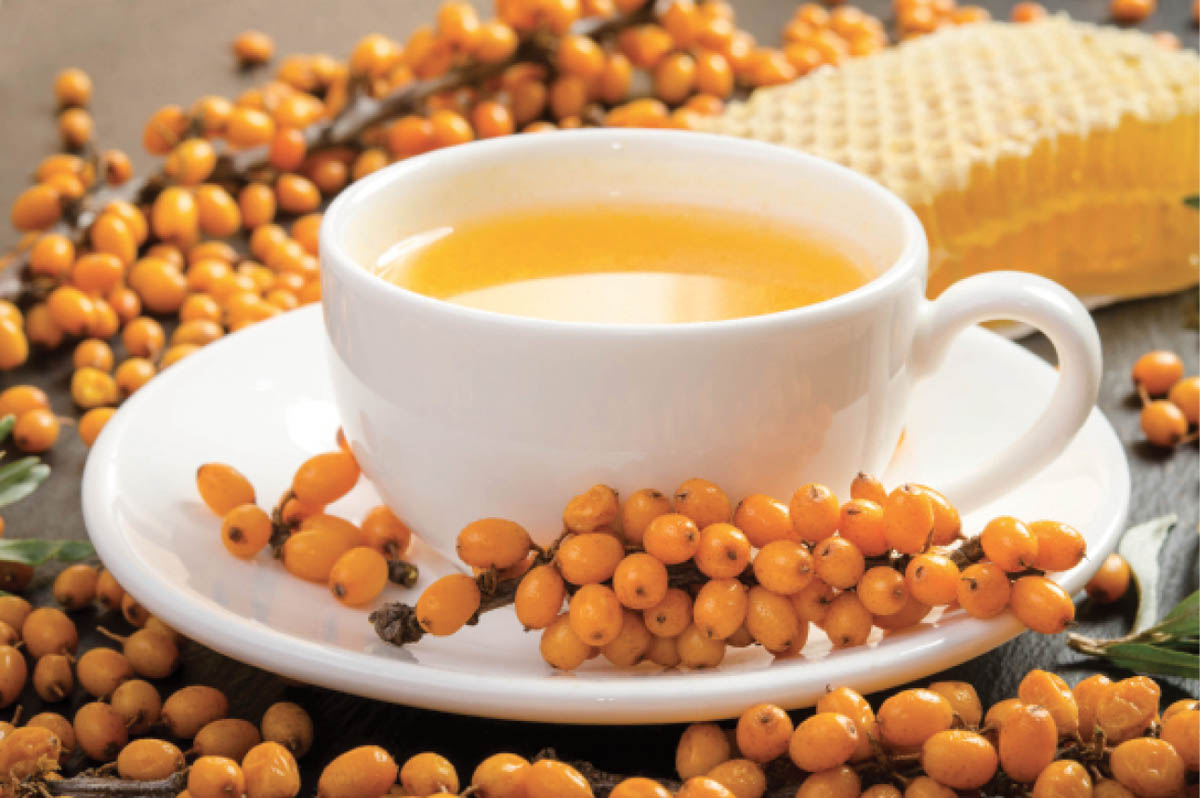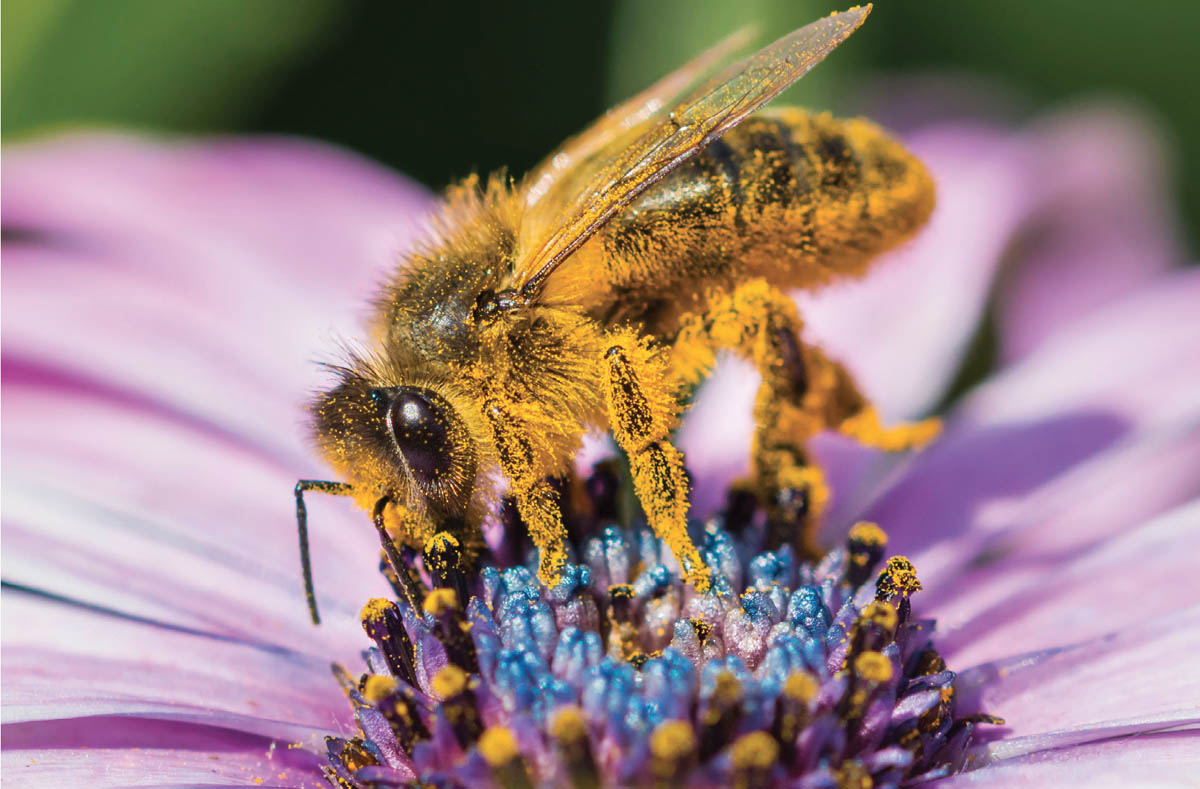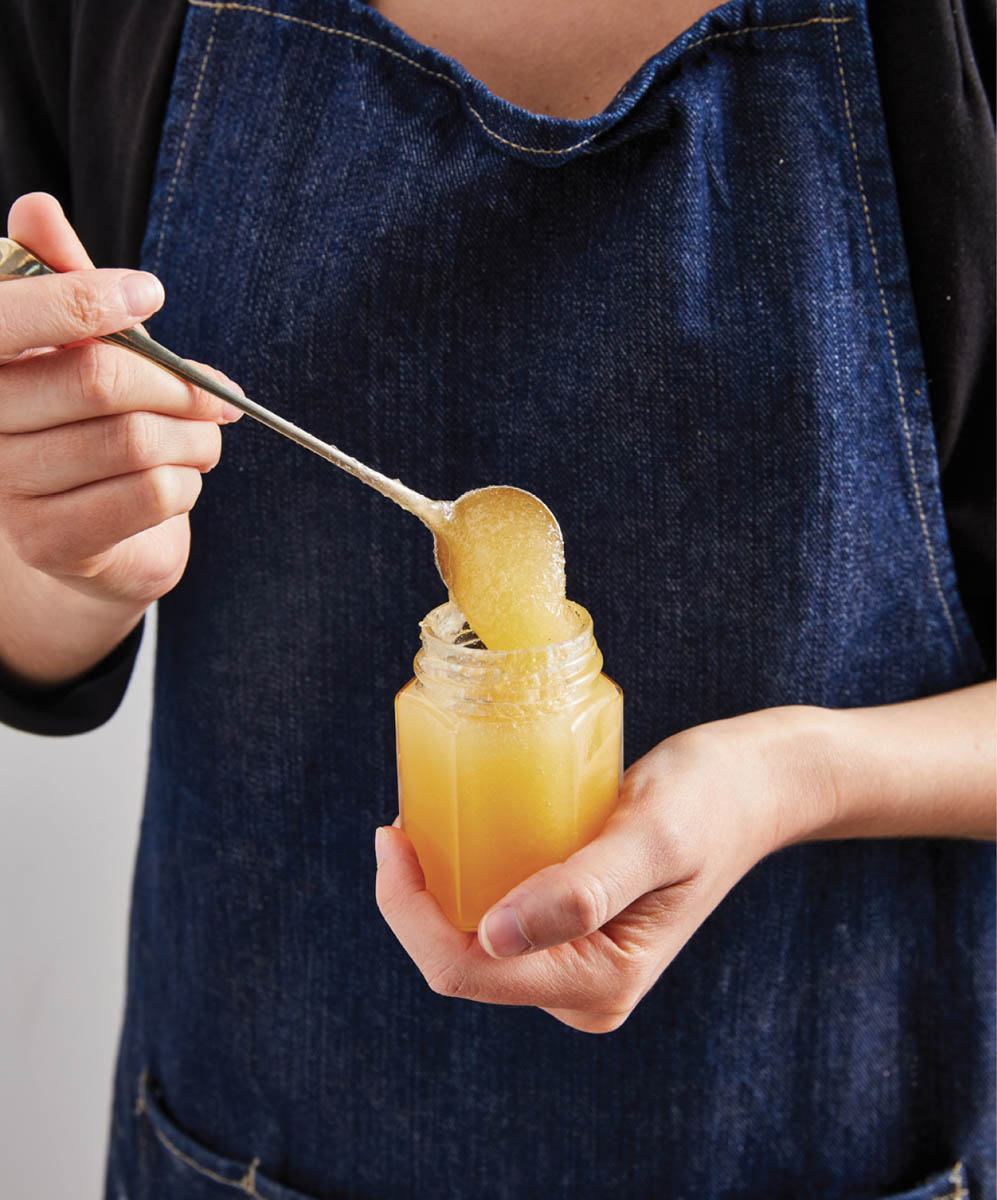
Honey’s History of Healing


Chyawanprash is a traditional Ayurvedic recipe that includes honey, ghee, gooseberries, sesame oil, herbs, and spices to bolster the immune system.
When I first began to experiment with herbal honey spreads, I started with the Honey Boost blend. It took a great deal of work for me to get the blend of herbs and honey just right for the Honey Boost — it needed to be strong enough to be effective yet balanced enough to be delicious. When I shared some with a friend of mine from India, he simply smiled knowingly, saying that it reminded him of home. He said it was as common there for mothers to give kids a spoonful of herb mixed with honey as it is in America for a mother to dole out a chewable vitamin at breakfast time. I’ll wager it’s much easier to talk a child into swallowing a spoonful of honey!

The story of the ages-old combination of honey and herbs is much deeper than I knew when I first began blending them. In many cultures that have lived near honeybees, a long tradition exists of using honey as an important medicinal food. Across the world, people have used plants and honey to heal the body and promote health. In fact, although we in the West live in a society dominated by prescription medicines, most cultures in the world still look to natural alternatives as their primary source of medicine. The history of the electuary is not one of simply stirring one healthy thing into another. Nor is it just about adding a sweetener to make bitter herbs taste better. The electuary is a synergy. The sum of honey and herbs together is greater than the parts. Many cultures purposefully blend synergies to use as remedies rather than using honey or herbs alone.
Ayurveda, which means “knowledge of life,” is a system of medicine with historical roots in India. This ancient practice is centered on keeping the body and mind balanced and healthy. For thousands of years, this traditional medicine system has used honey as a yogavahi, a medium for mixing medicines that increases the healing power of what it’s mixed with. Moreover, honey is also considered to be an anupana, a catalyst to increase the absorption of the herbs with which it is being administered. It is believed that honey helps the herbs reach deeper levels of imbalance in the body than could be reached with the herbs alone, and that it helps administer phytochemicals to the sites where they are needed. Although sweets in Ayurveda are considered cooling to the body, honey is unique in that it is warming and strength building for the body. Honey is used extensively in Ayurvedic medicinal preparations, including herbal jams and ferments, and as a vehicle for tablets and herbal powders.
Those who practice Ayurveda believe that honey protects against any harsh effects of herbs. Ayurveda also takes the age of honey into consideration. According to this ancient wisdom, fresh honey is more tonifying, while older honey can be used when purification and detoxification are needed, owing to its more drying nature.
Traditional medicine in India recognizes that varietal honeys (those made of nectar from only one kind of plant) created from medicinal plants can be applied in the same way as the plants themselves. This demonstrates an awareness that honey contains the phytochemicals of the plants collected. In fact, studies show that 4 percent of any honey’s makeup includes the phytochemicals that are found within the plant tissue.
In Traditional Chinese Medicine (TCM), honey is recorded as a healing substance as early as Shen Nang’s writings in about 2000 BCE. TCM recognizes that honey can greatly enhance the effects of “superior tonics,” China’s herbal version of superfoods. TCM sees honey as neither yin nor yang, meaning it is balanced, neither hot nor cold, male nor female — a desirable neutral property.
In TCM, a group of formulas called “patent medicine” are made by the same formula every time. Patent medicines were made into highly concentrated teas, then dehydrated and taken as a powder, or combined with honey and rolled into pills called pian. These pills were easily transportable and could be swallowed or dissolved in hot water to make an instant tea. This particular type of medicine isn’t as common anymore, though honey is still recognized to be a catalyst and a carrier for remedies that target, specifically, the spleen qi (addressing issues of digestion and immune system health) or is used as a tonic medicine.

Traditional Chinese Medicine uses sea buckthorn and honey in tea to aid digestion and treat cough.
In Argentina, honey is harvested not only from the Western honeybee, Apis mellifera, but also from stingless bees. Beekeeping in the region consists of traditional hives on farms and also “robbing” wild hives in the forest. The practice of using honey-based mixtures in home medicine is common. The Argentinian Criollos — people of Spanish descent born in Latin America — consider honey a necessary component of healing mixtures. One common response when asked about the practice of mixing honey with herbs or spices revealed the strong belief that “if you join them, then the medicine becomes more powerful.”
Nigeria has 4,000 years of written records chronicling the use of honey in traditional healing, and the practice is currently experiencing a renaissance. After many years of reliance on Western medicine, Nigerians are returning to traditional medicinal practices. Quite a lot of the honey-based medicines from Nigeria focus on fertility and reproductive health. It is interesting to note that Oshun, the goddess of feminine energy, childbearing, and fertility, is also the ancient deity associated with honey! In Nigeria, the addition of honey to a given formula for healing is believed to be essential to its success — another example of a culture that believes honey amplifies the effectiveness of the herbs that are added to it.
In premodern Western medicine, there was a particular type of electuary called a catholicon, which was popular until the nineteenth century. Though the exact formula for a catholicon seems to be in dispute, it is known that it was often formulated to relieve stomach issues, and that common digestive herbs were most likely used. By the nineteenth century, electuaries in the Western world were mainly used to treat animals, specifically horses.
Before modern antibiotics, it was well known that honey helped heal open wounds. In fact, during the American Civil War, honey was used to treat battle wounds because of its ability to fight infection. At a time when little else from Western medicine was available, natural remedies and treatments were often employed. This approach fell out of favor at the turn of the twentieth century with the scientific discovery of penicillin and other antibiotics.
Now that antibiotics are beginning to fail us due to overuse, scientific studies are being published confirming the efficacy of things like manuka honey for treating wounds. I was excited to learn that scientists are not only looking into the ability of honey on its own to guard against pathogens but are also examining the same honey-and-herb synergies that our ancestors implemented. Studies that looked at the synergy between herbs and honey against pathogens like Streptococcus mutans (strep) and Candida albicans (yeast overgrowth) found that while the herbs in question and the honey alone were somewhat effective, the combination of the two demonstrated strong evidence that a synergy exists between herbs and honey. Another study found a promising therapy against colon cancer in the synergistic effect found by combining ginger and gelam honey. Gelam honey is a Malaysian honey from the flower of gelam trees (Melaleuca cajuputi); it is noted to have high flavanoid and phenolic contents. Scientists are also examining the possibility that the catalyst effect of honey may be utilized in combination with man-made antibiotics to modulate the advance of antimicrobial resistance.
These studies demonstrate a wide range of usefulness of electuaries built on the recognition that they can no longer remain a quaint feature of our past, but instead should be an important part of our future health care solutions. For all of us, this should bring to light the importance of the bee not only as a major pollinator of our fruits and vegetables but also as a purveyor of good health.

When I was a new beekeeper, I tried to convince people to use honey as a replacement for granulated sugar in baking. I wrote many a blog post on how to cook with honey, explaining all the adjustments to be made to prevent excess browning or drying. I first came across warnings against heating honey while studying Ayurvedic uses of medicinal honey formulas. As I looked further into this advisement, I found that many other traditional medicine systems concurred that heating honey not only damages healthy enzymes in honey but is actually bad for you; I wanted to know why.
Ayurvedic medicine holds that honey heated above 104°F (40°C) is toxic. It is considered to be ama, meaning that it adheres to the mucous membranes and becomes like a glue inside the body. Charaka, an ancient Ayurvedic teacher living some 500 years ago, wrote that “nothing is more troublesome as ama caused by improper intake of honey.” In this system of treatment, heated honey is believed to be one of the most difficult toxins to cleanse from the body.
It is difficult to argue with several thousand years of wisdom, but I went in search of a scientific explanation. I found out that heat does change the naturally occurring enzymes found in honey. Improper storage and bright light also destroy these enzymes. When honey is heated, it undergoes a chemical change. Heating a sugar solution primarily made up of fructose such as honey creates the chemical 5-hydroxymethylfurfural (HMF) and decreases the activity and amount of peroxides it contains, meaning the antimicrobial qualities are damaged or destroyed. Bad news about the peroxides — we know a bit about their contribution to the beneficial properties of honey. But what exactly is HMF, I wondered?
The chemical HMF is formed by the heating and/or dehydration of certain sugars. Interestingly enough, it is present in both heated honey and high fructose corn syrup (HFCS). Fresh honey contains no, or very little, discernible HMF. This is a fact that has allowed the World Health Organization to monitor the quality of honey in our food supply through a system called the Codex Alimentarius Commission. According to this standard, honey is judged to be “raw” in temperate zones if it is below 40 milligrams/kilograms (40 parts per million), and in tropical zones if it is below 80 mg/kg (80 ppm). Anything above these levels is considered to have been heated or to have potentially been stored incorrectly or for an excessive period of time before sale. When honey is heated, HMF levels climb quickly. Typical pasteurization of honey requires a temperature of 161°F (72°C). A study published in the journal of the International Federation of Beekeepers Associations cited the following results when different types of honey were heated at varying temperatures for 24 hours.
|
35°C (95°F) 45°C (113°F) 55°C (131°F) 75°C (167°F) |
HMF levels 1.9–29.2 ppm HMF levels 2.2–32.6 ppm HMF levels 4.3–39 ppm HMF levels 43.4–226 ppm |
Why should we be concerned with HMF? Based on current research, HMF is a potential carcinogen. Studies in rats and mice have alerted us to the potentially toxic and carcinogenic effects of HMF in doses much lower than expected. Preliminary research relating to human tissue also supports this conclusion and validates folkloric and traditional medicine’s assertion that heating honey produces toxic changes. This should encourage everyone to consider using honey as a raw ingredient and to look toward other sugar substitutes for baking. Given the amount of work that is required by bees to create the honey that fills our grocery store shelves, honey should be used sparingly. Furthermore, honey should be considered predominantly as a health supplement rather than a sweetener.

Honey might turn grainy and crystallize in storage, but this doesn’t affect its properties and you can still use it.